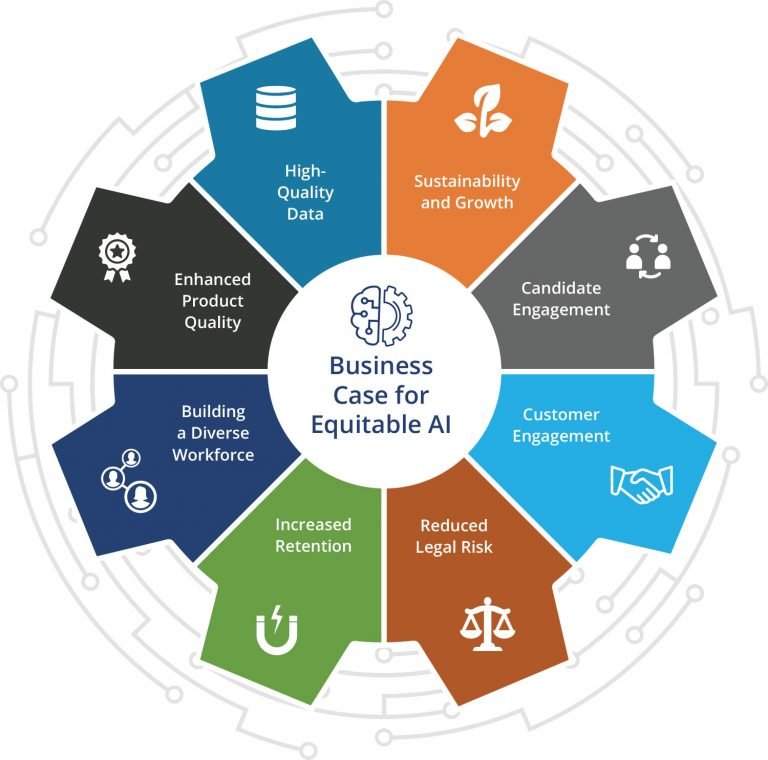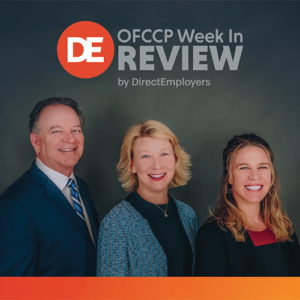
- OFCCP Alleges Individuals Classified as “Two or More Races” are Protected From Discrimination as a New “Protected Class”
- OFCCP Spotlights Its Disability Inclusion Resources
- Construction Compliance Course Released in The Online OFCCP Contractor Compliance Institute
- Moving Along – Pending Piece of Tip Rule Takes Its Last Dance
- E-Verify Now Offering Webinars Eligible for Professional Development Credits!
- September’s Employment Situation – Another Disappointing Jobs Creation Month and More Americans Dropping Out to Expand the Long-Term Unemployed List
- Artificial Intelligence in The Workforce – Utopia or Legal Landmine?
- Looking Ahead: Celebrate NDEAM 2021 And The 20th Anniversary Of the Office of Disability Employment Policy
Monday, September 27, 2021: OFCCP Alleges Individuals Classified as “Two or More Races” are Protected From Discrimination as a New “Protected Class”

Oddly, however, “Two or More Races” is not a “Protected Group” which either Executive Order 11246 or Title VII protects. Rather, “Two or More Races” is a political reporting group which the EEO-1 report has called for since the 2000 Census.
Moreover, the Courts have not recognized intersectional race claims: see OFCCP v. Cargill, Inc and OFCCP v. Jeanswear, Inc (coincidentally decided the same week by two different OFCCP USDOL Administrative Law Judges interpreting Executive Order 11246). Since that time, OFCCP has not pursued “intersectional” claims. This is because “Two or More Races” is not a Protected Group, but rather is merely an EE0-1 reporting category. In addition, the Courts have ruled that Executive Order 11246 and Title VII only make discrimination unlawful if the adverse action in question is “based on” a protected status the statutes make unlawful such as “race” (Black or White), “sex” (including Gender Identity), “religion,” “national origin” (i.e.; country of origin), or “color” This is why neither Executive Order 11246 nor Title VII protect “minorities” as a whole or “non-Hispanics.”
Had OFCCP sued HM Health Solutions, Inc. for “Two or More Races” discrimination, and had the company then filed a Motion to Dismiss the “Two or More Races” claim, the Courts would have dismissed this claim for failure to properly state a cause of action against the company. Just because one reports on it does not make it a Protected Group.
Tuesday, October 5, 2021: OFCCP Spotlights Its Disability Inclusion Resources

Compliance
The Section 503 Compliance Assistance webpage includes resources such as the Voluntary Self-Identification Form (in 11 languages) and Section 503 FAQs.
Recruitment & Hiring
The Best Practices For Fostering Diversity & Inclusion webpage includes 13 employee engagement practices and recruitment strategies. The Employment Referral Resource Directory includes non-profit organizations as references to assist contractors to hire qualified applicants and to fulfill their equal employment opportunity obligations.
Reasonable Accommodations
The Reasonable Accommodation pocket card outlines the process to request a reasonable accommodation.
Wednesday, October 6, 2021: Construction Compliance Course Released in The Online OFCCP Contractor Compliance Institute

Construction Compliance Review For Contractors is an estimated two-hour, self-paced course. It begins with an overview of the content and an explanation of the software’s functionality. From there, the information is divided into the following five modules.
- Legal Authority
- Affirmative Action Responsibilities
- Participation Goals for Women & Minorities
- 16 Affirmative Action Steps
- Section 503 & VEVRAA Requirements
Provided documents include the Construction Contractors Technical Assistance Guide and the OFCCP Posting & Notice Requirements.
Wednesday, October 6, 2021: Moving Along – Pending Piece of Tip Rule Takes Its Last Dance
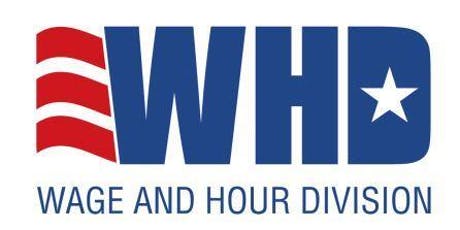
What’s At Stake?
The Proposal seeks to clarify the division of dual jobs and when the minimum wage trumps the tip credit.
How We Got Here
This one is a doozy! See “What’s Pending” from last month’s story, “A New Tip Rule Provides More Employee-Friendly Provisions.”
Thursday, October 7, 2021: E-Verify Now Offering Webinars Eligible for Professional Development Credits!
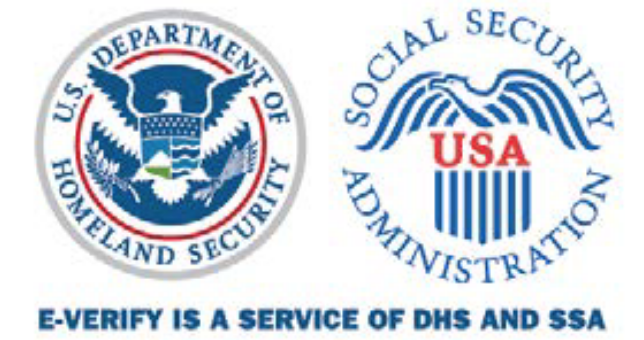
See the full schedule along with registration information on the website.
In The Know
September marked E-Verify’s 25th anniversary! On September 30, 1996, the Illegal Immigration Reform and Immigrant Responsibility Act (IIRIRA) was signed into law, creating three employment-eligibility verification pilot programs, including the “Basic Pilot.” A year later, six states adopted the Basic Pilot, and in 2007, the Agency renamed it “E-Verify.”
For federal Government contractors, a presidential Executive Order and subsequent Federal Acquisition Regulation (FAR) Rule requires federal contractors to use E-Verify to electronically verify the employment eligibility of employees working under covered federal contracts. The Order and the Rule reinforce federal government policy that the federal government does business only with organizations with a workforce legally eligible to work.
Friday, October 8, 2021: September’s Employment Situation – Another Disappointing Jobs Creation Month and More Americans Dropping Out to Expand the Long-Term Unemployed List
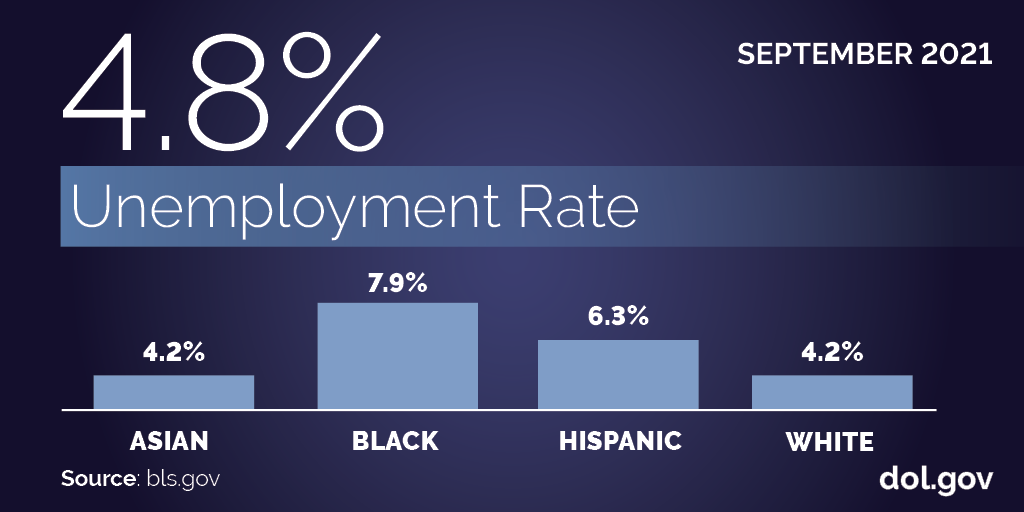
These data report bad news now showing a rapidly slowing U.S. economy which has already forced economists to dramatically revise downward real Gross Domestic Product (“GDP”) growth for the U.S. in 2021 from 6.7% to 5.2%. Economists attribute the slowing economy to two main drivers: (1) supply chain problems causing many manufacturers to lay-off employees for want of parts to complete their manufacturing assemblies, and (2) a new development not previously seen in the U.S. with millions of employees simply either walking off the job in recent months to stop working, or sitting at home unemployed and not responding to the millions of available help-wanted ads frustrated employers are publishing each month in greater numbers. (DE’s daily jobs listings now exceed the number of available jobs DE used to list before the pandemic. While some of this is due to the continuing growth in the number of companies which are DE Members, adjusting for that growth still shows more available jobs today than before March 2020).
Apart from the relatively paltry number of new jobs created in September, the drop of the unemployment percentage from 5.2% to 4.8% is counterintuitively also bad news. This is because for the unemployment percentage to drop while the number of persons unemployed is growing, it means that more persons are falling off the unemployment rolls as they roll-over to a category the Bureau of Labor Statistics calls “Long Term Unemployed” (“LTU”).
LTUs are those workers who have been unemployed for a year or longer and have given up looking for work. It’s about the numbers and how one counts. Once an unemployed person exhausts his/her state unemployment benefits (usually after 13 weeks, or after 26 weeks in cases of an economic “emergency” as we are currently experiencing—although several states provide shorter coverages and a few provide longer coverages) and quits looking for work, they “fall off” the unemployment rolls, even while still remaining unemployed because the state workforce agencies no longer have a way to track their progress and know if they have remained unemployed or have perhaps become re-employed. So, the Long-Term Unemployed percentages are increasing as the LTUs lose benefits, fall off the unemployment rolls and lose contact with the state employment offices. The LTUs are unemployed but you cannot see them or count them.
Job increases occurred in leisure and hospitality, professional and business services, retail trade, and transportation and warehousing.
Job decreases occurred in public education.
| The Employment Situation – September 2021 | |||
|---|---|---|---|
| Unemployment Rate | Sept 2021 | Aug 2021 | Sept 2020 |
| National (Seasonally adjusted) |
4.8% | 5.2% | 7.8% |
|
Women (20+) |
4.2% 7.9% 4.2% 6.3% 4.7% 4.2% |
4.5% 8.8% 4.6% 6.4% 5.1% 4.8% |
7.0% 12.0% 8.8% 10.3% 7.7% 7.7% |
| Veterans (Not seasonally adjusted) |
3.6% | 3.6% | 6.4% |
| Individuals with Disabilities (Not seasonally adjusted) |
9.0% | 10.9% | 12.5% |
Nonfarm Payroll Employment “New Jobs Added”
Monthly revisions result from additional reports from businesses and government agencies since the last published estimates and the recalculation of seasonal factors.
| Month | Original Report | Adjusted |
| September 2021 | 194,000 | TBD |
| August 2021 | 235,000 | 366,000 |
| July 2021 | 943,000 | 1,091,000 |
Quote from U.S. Secretary of Labor, Marty Walsh.
Friday, October 8, 2021: Artificial Intelligence in The Workforce – Utopia or Legal Landmine?

Navigating AI in the workplace is not easy, nor is it well understood. As such, the Partnership on Employment & Accessible Technology (PEAT) created a new resource, the “AI & Disability Inclusion Toolkit.” The toolkit includes information on the following topics:
- Equitable AI in the Workplace – Learn how AI works and how organizations use it across the employment landscape.
- Risks of Hiring Tools – Assess the risks and modes of discrimination AI may carry against individuals with disabilities and other protected classes.
- Business Case for Equitable AI – Map the strategic opportunities Equitable AI principles offer for organizations to be leaders and innovators.
- Equitable AI Playbook – Learn ten “Plays” to foster inclusion when implementing AI into the organization.
Looking Ahead:
Celebrate NDEAM 2021 And The 20th Anniversary Of the Office of Disability Employment Policy
Join Marty Walsh, U.S. Secretary of Labor, and Taryn Williams, Assistant Secretary of Labor for Disability Employment Policy, for a virtual celebration of National Disability Employment Awareness Month (NDEAM) and the 20th anniversary of the Office of Disability Employment Policy (ODEP).
The event will feature insightful dialogues and a video showcase highlighting strategies in action for an equitable, disability-inclusive recovery from the COVID-19 pandemic.
Date: Wednesday, October 20, 2021
Time: 2:00 – 3:00 p.m. EST
Location: Register to watch the streaming online
Featured Guests:
- Jenny Yang, Office of Federal Contract Compliance Programs Director
- Jennifer Sheehy, Deputy Assistant Secretary for Disability Employment Policy
THIS COLUMN IS MEANT TO ASSIST IN A GENERAL UNDERSTANDING OF THE CURRENT LAW AND PRACTICE RELATING TO OFCCP. IT IS NOT TO BE REGARDED AS LEGAL ADVICE. COMPANIES OR INDIVIDUALS WITH PARTICULAR QUESTIONS SHOULD SEEK ADVICE OF COUNSEL.
SUBSCRIBE.
Compliance Alerts
Compliance Tips
Week In Review (WIR)
Subscribe to receive alerts, news and updates on all things related to OFCCP compliance as it applies to federal contractors.
OFCCP Compliance Text Alerts
Get OFCCP compliance alerts on your cell phone. Text the word compliance to 55678 and confirm your subscription. Provider message and data rates may apply.

